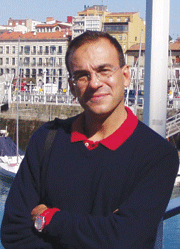E-Archive
Shot Peening in the Automotive Industry
in Vol. 16 - July Issue - Year 2015
The Choice Of The Shot Peening Parameters

Mario Guagliano
I was recently involved in a multidisciplinary research project as being responsible for the part related to mechanical engineering. In particular, the project is aimed at the design of a new system in order to motorize a twin-engine helicopter in the category of Very Light Rotorcraft CS-VLR to be employed for pilot training and for territorial and environmental monitoring, with low costs in relation to the benefits and with the possibility to conduct missions and/or reproduce realistic situations of emergency on larger aircraft powered by twin-turbine engines. To reach this goal, a new class of rotorcraft was sought to fill a gap currently present in the market: a twin piston-engine helicopter. The double engine was to ensure the possibility to certify the aircraft as a Class-A VTOL aircraft to fly over densely populated areas. I stop here, okay; this is not the subject of the column, we are talking about cars, not helicopters! Nevertheless, an important part of the project was related to the treatment of shot peening to improve the mechanical performances of the twin engine, to make it safer and lighter. And this was not so different from what we can discuss about shot peening of car engines, designed to be long-lasting and not without a fail-safe approach, and that is the case of the twin engine.
In this framework, there is an educational part of the project for excellent graduate students, which should help the research team in the conceptual development of the project itself.
The students'team covered the different areas of engineering of interest for the project; from aeronautic engineering to industrial engineering and management, from mechanical engineering to electronics. Obviously, I mainly interacted with the student of mechanical engineering as regards how to shot-peen the parts of interests, namely the crankshaft, the connecting rods, plus other parts.
Well, I gave the student books on shot peening, just to make him familiar with the subject and to make him aware of the basis of shot peening, and he perfectly understood the main issues related to this treatment: surface work hardening, residual stresses, roughness, shots and their properties, coverage and so on.
Then he asked me the way to choose the optimal treatment parameters for the application of interest. In particular, how they are related to the stress state in the critical points, how they are related to the load cycles due to the engine work and how we can make sure that, even if we know (or we should know) the residual stresses induced by shot peening, these latter will remain the same during the lifespan of that machine element. He underlined that in many cases (at least in the papers and documents found in literature he read) the residual stresses before fatigue cycling are considered to assess improvement due to shot peening; however, are we sure that the initial residual stresses remain the same along the life span of the system?
I replied that there are many papers and research studies addressing this subject and different criteria have been developed to this aim, but no one has yet determined a universal validation and they can be applied only in cases not too distant from the materials and conditions under which they were obtained. At least, if we do not wish to be safe and use large safety factors, this is what we are continuously trying to avoid.
And let me say, many people in the field say that the role of residual stresses is possibly overestimated till today, and other studies should be addressed toward a better understanding of the role of surface work-hardening and possible grain refinement.
So, what is my final answer to the question of my student? The subject is far from being completely understood, and I wish further research and investigation will be developed in the near future to fill this gap. And, in spite of all this scientific work done so far and of the software we can use today, do not forget to ask the practitioners dealing with shot peening everyday, who can give you advice directly gained in the field!
Shot Peening in the Automotive Industry
by Mario Guagliano
Contributing Editor MFN and
Associate Professor of Technical University of Milan
20156 Milan, Italy
E-mail: mario@mfn.li



























